It’s a natural instinct to want the best for our children in every way possible. However, despite our efforts, many children worldwide are not getting the levels of nutrients they need, which have lasting consequences for both physical and mental health.
These issues are often exacerbated by poor lifestyle and dietary choices that continue to keep levels of certain vitamins and minerals lower than what is required, creating a situation ripe for dietary supplements. In order to provide effective dietary supplements for children, though, it is important to think of some of the unique aspects of the category: targeting the specific deficiencies that children are dealing with, minding the specific nutritional needs children have at different age ranges as well as making sure the supplements are appealing enough for children to want to take.
Building Blocks
Pinning down the exact nutrients a child needs is difficult, as different ages demand different requirements. This is part of the reason why the most common supplement you will see recommended for children is a good multivitamin. The components consumers are looking for in their multivitamin may 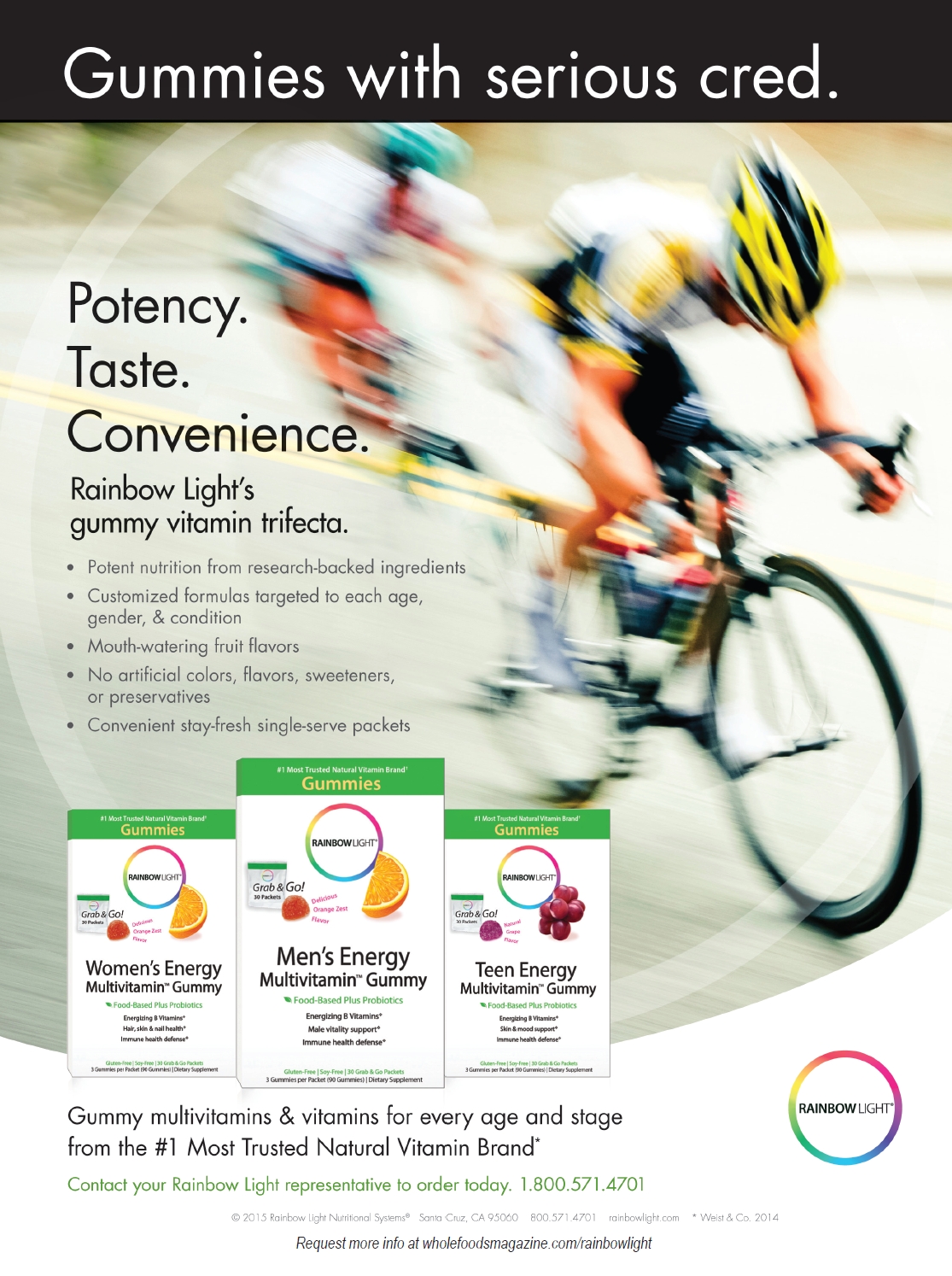 vary, but there are some nutrients in particular that are both universally needed and commonly deficient.
vary, but there are some nutrients in particular that are both universally needed and commonly deficient.
Susan Hazels Mitmesser, Ph.D., director of nutrition research at Solgar Vitamin and Herb, Leonia, NJ, names vitamin D as one such example.
In addition to not getting enough from diet, Stacy Gillespie, director of marketing at MegaFood, Derry, NH, adds, “With parents’ concerns regarding sun exposure and skin cancer, many are applying sunscreen to kids constantly and limiting their exposure to sunlight, resulting in vitamin D deficiencies.” She says that this could be particularly problematic in areas such as the northern U.S. where children are more likely to be inside during winter months.
Shazi Visram, founder and CEO of Happy Family, New York, NY, says that vitamin D deficiency is “greater than 50% in toddlers aged 24 to 47 months,” and that the nutrient plays an essential role in the absorption of calcium necessary for strong bones in children this age.
In one study, 100 peripubertal, nonobese children, ages nine to 11, had their vitamin D levels measured throughout the winter (December-March) and the summer (June-September). Bone mineral content, fat mass, lean mass, bone mineral density for the total body and lumbar spine were all measured throughout the study period as well. The results showed that almost half of the children were vitamin D deficient in the winter, validating some of Gillespie’s concerns. More promising was the fact that higher levels of vitamin D correlated with better bone mineral content, fat mass, bone mineral density for the total body and lumbar spine. These statistics were also independent of factors like sex, puberty, and even calcium intake, further affirming the beneficial properties of vitamin D for bone support (1).
Another nutrient Visram expresses concern about is choline. “We know this plays a vital role in brain development, but there is insufficient data to conclude whether the nutritional status of children in the U.S. is sufficient. My guess is that they are not getting enough and I would love to see more research into this,” she says.
Dallas Clouatre, Ph.D., consultant for R&D at Jarrow Formulas, Inc., Los Angeles, CA, cites information from Nutrients naming vitamin D, along with calcium and potassium as three of the most common vitamin deficiencies in children (2). While he says that vitamin D and calcium are ideal candidates for children’s multivitamins, getting proper levels of potassium can be more difficult “because of the amounts needed to offset the typical U.S. diet high in sodium and low in leafy vegetables and whole fruit.”
Calcium’s role in the development of strong bones and teeth make proper levels of it in childhood a paramount concern. Hallie Rich, founder of alternaVites, New York, NY, highlights that increasing amounts of calcium deficiencies in children four years and over “can be problematic for growing and developing preteens and teens.”
Marci Clow, RDN, lead R.D. at Rainbow Light Nutritional Systems, Santa Cruz, CA, cites information from the Surgeon General’s Report on Bone Health and Osteoporosis saying that “When looking at older children, more than 86% of girls and 63% of boys ages 12 to 19 are not getting adequate levels of calcium (3).” However, the calcium deficiency issue may not necessarily be one of underconsumption alone. Going back to Visram’s previous statement about the importance of vitamin D in the absorption of calcium in toddlers, this may be an example of one deficiency factoring into another due to relationships between nutrients. This is not that uncommon in children or adults—one example being the requirement of proper levels of magnesium for calcium to be properly processed in the adult body.
When talking about children’s bone health, another nutrient to consider is vitamin K2, via its relationship 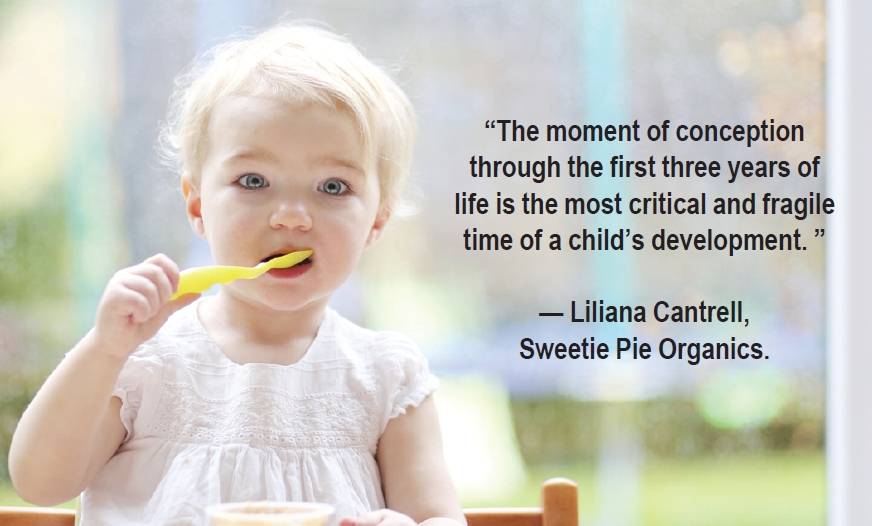 to the protein osteocalcin. Osteocalcin binds calcium to the bone matrix and contributes to overall bone health—but it is dependent on vitamin K2 to function. In one study, otherwise healthy prepubertal children were either given a supplement containing MK-7, a member of the K2 family (MenaQ7, from Nattopharma ASA, Høvik, Norway) or a placebo over a two-year period. Study results showed an increase in osteocalcin carboxylation in the group supplemented with vitamin K2, which could potentially lead to greater bone mineral density and bone mineral content overall (4).
to the protein osteocalcin. Osteocalcin binds calcium to the bone matrix and contributes to overall bone health—but it is dependent on vitamin K2 to function. In one study, otherwise healthy prepubertal children were either given a supplement containing MK-7, a member of the K2 family (MenaQ7, from Nattopharma ASA, Høvik, Norway) or a placebo over a two-year period. Study results showed an increase in osteocalcin carboxylation in the group supplemented with vitamin K2, which could potentially lead to greater bone mineral density and bone mineral content overall (4).
Going back to magnesium, this is yet another category where children are deficient, according to Andreas Koch, vice president of marketing at Natural Vitality, Austin, TX. In addition to being an important complement to calcium, magnesium can benefit children by supporting “energy, focus, calmness, immunity and more,” he says. He notes that in some cases, magnesium can be more difficult to find in traditional kids’ multivitamins than some of the other nutrients mentioned, and when it is, it can be found in small amounts. His company offers a multivitamin with a 1:1 ratio of calcium and magnesium to attend to both nutritional needs.
With such a variety of potential uses, scientific research on magnesium covers a wide spread of areas. In one study, children aged two to 15 with severe acute asthma that took nebulised magnesium added to their standard asthma therapy experienced a modest, but prevalent, improvement in asthma severity scores (5). Another study focusing on bone development in eight to 15-year-old girls showed a significant bone mineral density increase in a test group supplemented with magnesium over the course of a year over placebo (6).
Herb Joiner-Bey, N.D., medical science consultant to Barlean’s Organic Oils, Ferndale, WA, names zinc, commonly associated with growth and immune function, and omega-3 fatty acids as two other commonly deficient nutrients in children. Omega-3s are a particularly hot topic in this category currently due to potential applications for cognitive health in developing children—more on this later. Annie Salsberg, N.D., medical advisor at Kabrita, Mississauga, Canada, reminds us that in addition to brain and neurological health, omega-3s are important for eye health as well.
Chris D. Meletis, N.D., director of science and research at Trace Minerals Research, Ogden, UT, says that in addition to zinc and omega-3s, children are missing out on “a full array of phytonutrients like ECGC, flavonoids, carotenoids and other essential nutrients found only in health-promoting diets.”
Equally important is making sure that the multivitamin itself that is chosen is prepared safely and properly. Murray Clarke, N.D., D.Hom. L.Ac., owner, president and formulator of ChildLife Essentials, Culver City, CA, provides a checklist of items that customers will be looking out for when they reach for the shelf: 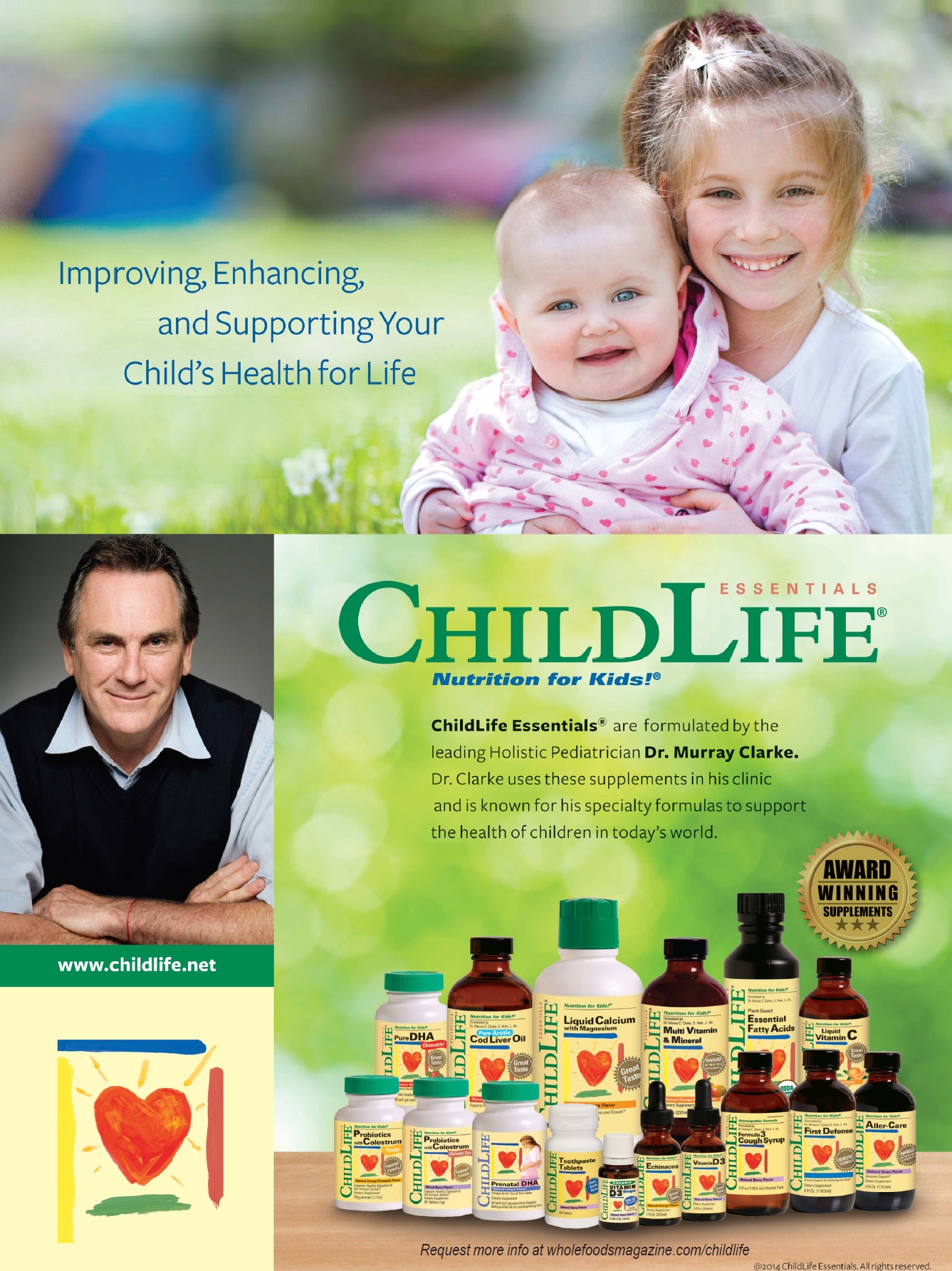 “toxins, artificial colorings, flavorings and sweeteners, dairy and alcohol free and non-GMO.”
“toxins, artificial colorings, flavorings and sweeteners, dairy and alcohol free and non-GMO.”
Growing Up Natural
While the aforementioned nutrients are valuable to children at all stages of development, age can play a role in nutritional requirements. Trisha Sugarek MacDonald, BS, MS, senior director of research and development and national educator of Bluebonnet Nutrition Corp., Sugar Land, TX, divides childhood development into four main stages based on age. “Infants are those under the age of two. Children categorized as preschoolers range from two to four years, and kids in middle childhood are typically aged five to 10 years; sometimes referred to as school-age. Children who are older than 10 years are considered to be preadolescent,” she explains. Due to the high amount of growth that children undergo in a relatively short amount of time, in addition to many of the micronutrients (vitamins and minerals) that have already been discussed, appropriate levels of macronutrients, like carbohydrates, proteins, and fats are needed at these stages for optimal growth and development.
Because of these varying needs, measures have been taken to provide resources that parents, formulators and healthcare professionals alike can look to. The most prominent example is the Dietary Resource Intakes (DRIs) provided by the Institute of Medicine. Clow explains that part of the function of these is to “establish separate dietary intake recommendations for children between the ages of 4 to 8 years and those between the ages of 9 and 13 years to account for needs that change as they grow and approach puberty.” It is these stages, when the most rapid growth is taking place, where changes in nutritional needs can be most pronounced. However, on the micronutrient end, Clow believes that DRIs don’t show huge variations between these two particular ranges in general, with some exceptions. For example, the calcium DRI for the 4-8 year old range is 1,000 mg versus 1,300 mg for 9-13 year olds, the reason being that the attainment of peak bone mass is established during puberty. Likewise, she explains  that B vitamin complexes have a slightly higher DRI in the older age group due to “the role B’s play in metabolism, energy production and cellular growth.”
that B vitamin complexes have a slightly higher DRI in the older age group due to “the role B’s play in metabolism, energy production and cellular growth.”
With this said, though, there are exceptions to the norm. Gillespie says that for teens, while nutrients like calcium and magnesium are still important, others like chromium take center stage to “help support the physical and cognitive demands of teenagers’ lifestyles.” Items like multivitamins are still one of the best options for teens, she says, because of their “erratic diets.”
By far, though, the age group that requires the most specific focus in supplementation is infants. Liliana Cantrell, founder and CEO of Sweetie Pie Organics, Raleigh, NC, says “the moment of conception through the first three years of life is the most critical and fragile time of a child’s development. It’s during this important stage of life that a child’s body, brain and cognitive functions are growing and developing faster than at any other time in their life.” As a result, paying attention to some of the unique facets of infant nutrition is very important, and their iron needs are a great example.
Iron’s primary function is to transport oxygen throughout the blood, but Clouatre explains that iron requirements in infants (a DRI of 6.9 g) reach highs that aren’t seen again until the 14–18 year old range. Salsberg details the nature of iron levels in infants a bit further, explaining that “babies are born with a reserve of iron, which comes from their mother’s blood while they are in the womb, but this reserve tends to deplete around six months.” While iron plays a crucial role in infant nutrition, Clouatre warns us that “at the same time, iron is one of the nutrients most often taken by children in toxic amounts, hence requires caution.” Salsberg recommends an iron-fortified formula for those not breastfeeding at this stage to help with iron levels, particularly since children can be picky eaters at this age when it comes to iron heavy foods.
Visram adds calcium requirements as an example, noting how they nearly double from the seven to 12-month age range (270 mg/day) to the one- to three-year range. (500 mg/day). They continue to increase, topping off at 1,300 mg/day for nine to 13 year olds.
Meletis says that infants and toddlers in general “need to be dosed with a greater level of care.” Iron along with vitamin A are two commonly known nutrients that parents need to pay special attention not to overdo, but he takes us back to the original purpose of dietary supplements, explaining that “supplements are designed to supplement a healthy diet, NOT serve as a substitute… If a child or teen is eating a generally traditional diet of whole foods, then ‘supplementation should be more like topping off the gas tank rather than filling it.’”
Clouatre agrees that “infant nutrition in general is a hard case.” In addition to the very real risk of going over the Tolerable Upper Limit (TUL) for nutrients like zinc and folic acid during the first six months of life, he points out that the mother’s health and dietary intake “may contribute greatly to her child’s health and even determine her child’s risks for major diseases in adulthood.” The one fortification that he believes many researchers do agree on for infant supplementation is an increased intake of omega-3 fatty acids (7).
If it sounds like this particular discussion is repeatedly referring back to diet, there’s a reason for that. Children in first world countries are grappling with a unique nutritional problem. Sugarek McDonald points out, “In developing countries, children’s micronutrient deficiencies typically include iodine, vitamin A and iron. However, malnutrition actually takes on a different form in the United States and other first world countries.” Rather than not eating enough food, many of these children are eating too much of the wrong foods, overconsuming saturated and trans fatty acids and not eating enough fruits and dark leafy greens. As a result, in addition to some of the previously mentioned deficiencies, nutrients like folate, fiber and vitamin E are also commonly found to be at low levels in children.
Clouatre says American children suffer from overnutrition as much as undernutrition in some cases, 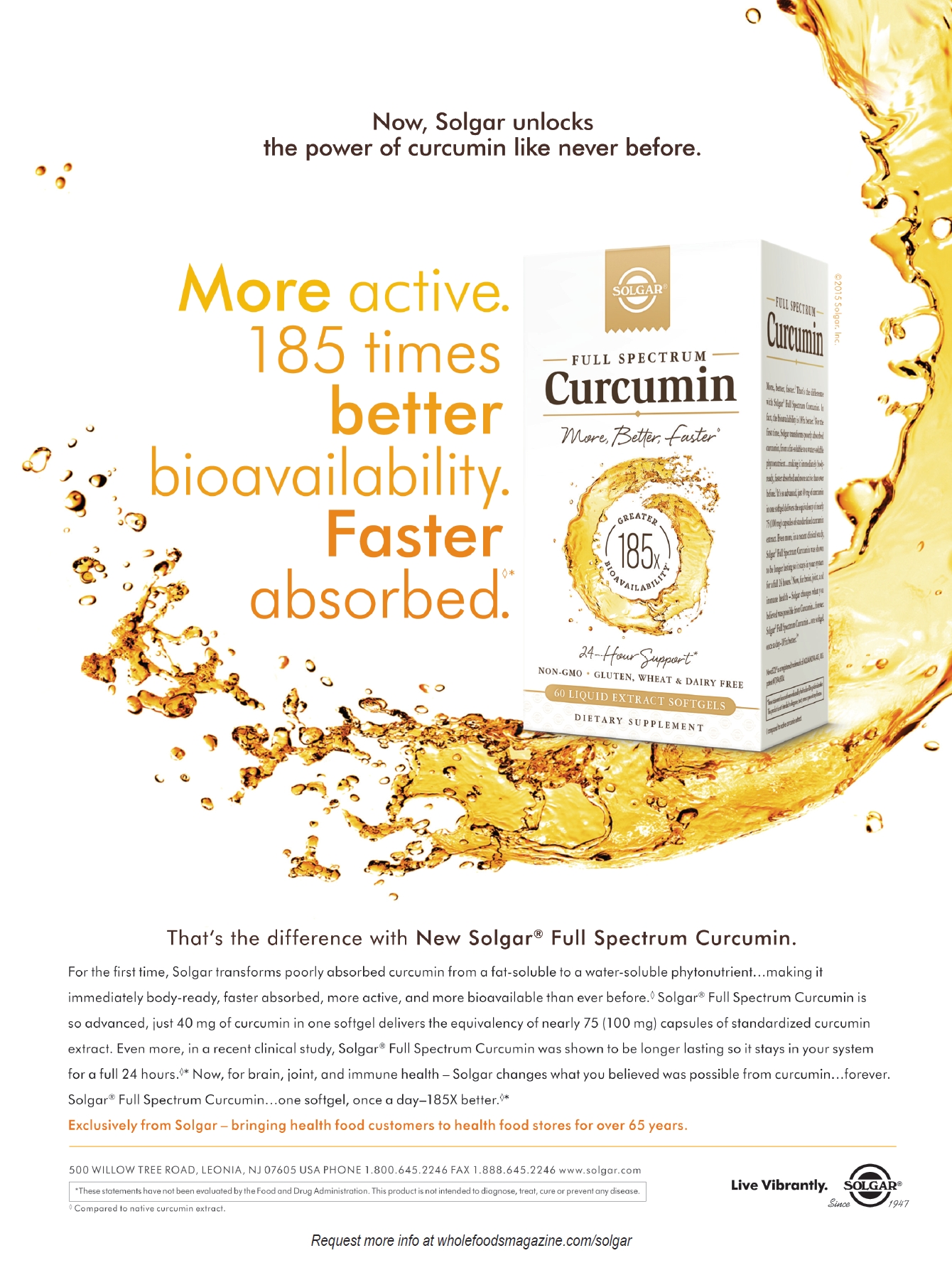 citing information from the Feeding Infants and Toddlers Study 2008 that says as many as 30% of children do not eat any form of fruit or vegetable during the day (8). He believes this is part of the reason why fiber deficiency is so common at these ages. However, many of these concerns “reflect not just the diets of children, but also imbalances in the greater part of the U.S. food chain,” he concludes.
citing information from the Feeding Infants and Toddlers Study 2008 that says as many as 30% of children do not eat any form of fruit or vegetable during the day (8). He believes this is part of the reason why fiber deficiency is so common at these ages. However, many of these concerns “reflect not just the diets of children, but also imbalances in the greater part of the U.S. food chain,” he concludes.
Knowledge is Power
Much of the supplement usage we’ve covered so far is about compensating for holes in diet, but with consumers becoming more and more curious about the potential of dietary supplements for improving their quality of life, that interest expands to their children as well. While dietary supplements cannot be said to cure or treat any disease or condition, cognitive health in children is one area where there is a great deal of scientific and consumer interest. Part of this comes from concerns over neurobiological issues that may stem from diet. Attention-deficit/hyperactivity disorder (ADD/ADHD) has been diagnosed in approximately 11% of children ages four to 17, and is a hot topic driving interest in cognitive children’s supplements, as well as a general interest in improving focus (9).
Clow believes that diet in conjunction with supplements can be an ideal way to manage behavioral disorders including ADHD in children. She mentions a review of over 70 publications that “emphasized a simple diet low in fats and high in whole grains, fruits, and vegetables as one of the best alternatives to drug therapy for ADHD.”
When it comes to cognitive support for children, omega-3 fatty acids are both the most prominent option, particularly EPA and DHA. Sugarek McDonald explains that they “are beneficial in the body because they provide fluidity to cell membranes and improve communication between brain cells.” DHA in particular is important because it is a vital component of the brain and retina, comprising 40% of all polyunsaturated fatty acids (PUFA) in the brain and 60% in the retina.
Clarke adds that DHA is also “found in large quantities in neurons of the central nervous system as structural support. A deficiency of DHA in these areas can be correlated with various symptoms of cognitive dysfunction.” As a part of the central nervous system, DHA also supports healthy neurotransmitters, which play a role in transmitting information to the brain throughout life.
 As a result of the prominence of omega-3s both in cognitive health and several other categories, there is a wealth of research available, with Hazels Mitmesser saying that brain development, brain function, learning and behaviors in children are all areas of interest. In one study, children between the ages of six and 11 were separated into two groups over a 16-week period; one that took omega-3 supplements throughout two phases of the study period, and another that took a placebo for the first phase before switching to omega-3s. Out of the subjects who completed the study, 30% of the children showed significant clinical improvement in ADHD symptoms, with others showing lower levels of improvement (10). The researchers ultimately concluded that their findings “support the safety and tolerability of omega-3 PUFA administration,” but more research would need to be done to determine ideal dosages.
As a result of the prominence of omega-3s both in cognitive health and several other categories, there is a wealth of research available, with Hazels Mitmesser saying that brain development, brain function, learning and behaviors in children are all areas of interest. In one study, children between the ages of six and 11 were separated into two groups over a 16-week period; one that took omega-3 supplements throughout two phases of the study period, and another that took a placebo for the first phase before switching to omega-3s. Out of the subjects who completed the study, 30% of the children showed significant clinical improvement in ADHD symptoms, with others showing lower levels of improvement (10). The researchers ultimately concluded that their findings “support the safety and tolerability of omega-3 PUFA administration,” but more research would need to be done to determine ideal dosages.
Another study on children between the ages of eight and 16 expanded the field to behavioral problems in general with part of the sample group given 1 g of omega-3 daily over a six-month period, with caregivers reporting externalization and internalization of behavior problems at baseline, six months and at 12 months to determine status posttreatment. Research results gave some initial indication that the children in the treatment group exhibited long-term reduction in child behavior problems (11).
Omega-3s are certainly a star ingredient when it comes to children and cognitive health, but there are other fats that can be considered as well. Gene Bruno, MS, MHS, vice president of formulation and scientific oversight of Twinlab Corp, New York, NY, names phosphatidylserine (PS) right alongside DHA when it comes to cognitive health. Another major phospholipid found in the brain, PS “plays an important role in cell-to-cell communication and the transfer of biochemical messages into the cell,” he says. Bruno adds that research has shown PS supplementation to be helpful for memory and cognitive support in students.
|
Select Products: Kids Health alternaVites, Inc.: alternaVites Kids multivitamins, including alternaVites Kids Vitamin C, alternaVites Kids Vitamin D and alternaVites Kids Calcium with Mag + D. Barlean’s Organic Oils: Barlean’s Omega Swirl Fish Oil, Barlean’s Omega Swirl Flaxseed Oil, Barlean’s Greens, Barlean’s Forti-Flax. BENEO, Inc.: Oraftisynergy1. Bluebonnet Nutrition Corp.: Super Earth Rainforest Animalz Whole Food Based Multiple, Super Earth Rainforest Animalz Calcium Magnesium Plus Vitamin D3, Super Earth Rainforest Animalz Vitamin D3 400 IU, Super Earth Rainforest Animalz Vitamin C 250 mg, Super Earth Rainforest Animalz DHA 100 mg. ChildLife Essentials: ChildLife Children’s Multi-Vitamin and Mineral, ChildLife Probiotics and Colostrum, ChildLife Probiotics and Colostrum, ChildLife Pure DHA, ChildLife Cod Liver Oil, ChildLife EFA. Happy Family: Happy Tot purees, Happy Squeeze purees, Happy Child super nutrition shakes. Herbalist & Alchemist: Healthy Kid’s Compound, Kid’s Calmpound Glycerite, Kid’s Tummy Relief, Healthy Kid’s Support Kit, David Winston’s Clarity Compound, David Winston’s Focus Formula, Astragalus Glycerite, Chamomile Glycerite, Lemon Balm Glycerite, Oat Glycerite, Skullcap Glycerite, Hawthorn Solid Extract. Hero Nutritionals: Yummi Bears Complete Multi-vitamin, Yummi Bears Wholefood+ Antioxidants, Yummi Bears Vitamin C, Yummi Bears Vitamin D3, Yummi Bears Fiber, Yummi Bears Omega 3 DHA, Yummi Bears Echinacea + C & Zinc. Vegetarian, Organic, and Sugar-free Yummi Bears are also available. Horphag Research: Exclusive worldwide supplier of Pycnogenol. Jarrow Formulas, Inc.: Preg-Natal + DHA, Kid Bear Kids Multi, Yum-Yum D3 Gummies, Yum-Yum D3 Liquid, Yum-Yum PS 100 Gummies (Yum-Yum Phosphatidylserine 100 Gummies), Yum-Yum Dophilus. Kabrita: Kabrita Toddler Formula, Kabrita Goat Milk Yogurt and Fruit. MegaFood: MegaFood Kid’s One Daily, MegaFood Kid’s B Complex, MegaFood Kid’s Vitamin D3, MegaFood Alpha-Tenn, MegaFood Kid’s N Us MegaFlora. NattoPharma ASA, Inc.: MenaQ7. Natural Vitality: Natural Vitality Kids Calm Multi. Rainbow Light Nutritional Systems: NutriStart Multivitamin Powder, Nutristars, Kids’ One MultiStars, Rainbow Light’s Active Health Teen Multivitamin, Gummy Bear Essentials, Gummy Power Sours Multivitamin & Multimineral formulas. Solgar Vitamin and Herb: U-Cubes Multivitamin Gummies, U-Cubes Calcium with D3 Gummies, Kangavites Multivitamin Chewable Tablets, Kangavites Vitamin C 100 mg Chewable Tablets, Vitamin D3 1000 IU Chewable Tablets. Sweetie Pie Organics: Tiny Wafers teething biscuits, freeze dried Fruit and Veggie Snacks. |
Koch reminds us that while there is “no one, single silver-bullet solution to addressing ADD,” magnesium can be a viable option “for its calming benefits for both kids and adults… Even our thoughts (via brain neurons) are dependent on magnesium.”
Meletis adds zinc and iodine to the list of micronutrients to consider. One study on zinc supplementation showed a positive effect on children with ADHD, but out of all study groups, the only one that showed a “visually impressive” effect over placebo was the group given 15 mg of zinc twice a day, compared to smaller doses. The study authors also added that facts such as endemic diets and zinc deficiencies may have played a role in the results (12).
Clouatre agrees that “sometimes it is the minerals that may be the most important nutrients,” but also offers up combinations as a beneficial choice for cognitive support. He cites a German study where 810 children, aged six to 14, were supplemented with omega-3 and omega-6 combined with magnesium and zinc over a three-month period. Most subjects showed considerable reduction in symptoms of attention deficit and hyperactivity/impulsivity at the end of the study compared to baseline, with a reduction in emotional problems and sleep disorders as well (13).
Joiner-Bey takes a different approach, suggesting some supplements that “reduce irritation of nerve cells by food allergens and bowel bacterial toxins” to reinforce what he calls the “blood-brain barrier.” Green tea, grape seed, and French maritime pine bark extract (as Pycnogenol, distributed by Horphag Research, Geneva, Switzerland) are three ingredients he believes can contribute to cognitive health by helping alleviate irritation. Pine bark extract (as Pycnogenol) in particular has been the subject of some attention in the cognitive area. In one study on healthy college students, 53 students (ages 18-27) were given the supplement over an eight-week period, being evaluated on attention, memory, executive functions and mood rating during weeks five through eight. This study is unique because the performance of the students in university examinations was also used as a metric for the results. Overall, the supplement group showed statistically significant improvement in all four study areas over placebo, with the supplement group failing only 6% of their tests to the control’s 11% (14).
Not to be neglected in this conversation is the herbal approach. David Winston, AHG, founder and president of Herbalist & Alchemist, Washington, NJ, names several categories of herbs and herbal extracts that can play a role in mental and emotional support for children. The nootropics category, which includes gotu kola, ginkgo, lavender, and bacopa, can “enhance cerebral circulation, reduce neuro-inflammation and have neuroprotective activity,” he says. Another group which may be of interest for ADHD concerns especially are nervines, “which enhance relaxation and promote a calm, serene mindset without being sedating.” Hawthorn, chamomile, betony and other herbs comprise this group. Lastly, Winston says the adaptogens group can provide a calming effect for children by helping “to re-regulate the HPA axis and SAS systems, while lowering cortisol levels and preventing stress-induced mitochondrial dysfunction.” Examples of this category include ashwagandha and reishi mushroom—the latter of which has been part of the brain health discussion for adults for some time now.
The Picky Eater Problem
By now, it’s clear that children have a wide variety of options when it comes to supplements to improve  their current and future quality of life, but Bruno puts it in the starkest of terms when he says “children don’t care how good for them a dietary supplement may be. If it doesn’t taste good, they won’t eat it.” And, certain delivery formats, such as tablets or capsules, may simply not be a viable option for children, a fact that becomes more concrete the lower age goes. As a result, alternate formulations like liquids and gummies are very popular due to taste and texture being more appealing—but this also raises some concerns.
their current and future quality of life, but Bruno puts it in the starkest of terms when he says “children don’t care how good for them a dietary supplement may be. If it doesn’t taste good, they won’t eat it.” And, certain delivery formats, such as tablets or capsules, may simply not be a viable option for children, a fact that becomes more concrete the lower age goes. As a result, alternate formulations like liquids and gummies are very popular due to taste and texture being more appealing—but this also raises some concerns.
Rich points out that “now both consumers and people in the medical community are seeing the limitations of the gummy form since they can contribute to dental problems, contain sugar and other objectionable ingredients, and also may not have the potency a consumer is looking for.” Her company uses a powder delivery system that she says provides versatility while avoiding some of the potential caveats of gummies such as dental issues or sugar content (in addition to taste, gummies may sometimes contain sugar to avoid sticking together in packaging).
While some gummy and liquid delivery systems may be concerning, many experts believe it’s a matter of picking your battles, and you should try and minimize or seek alternatives to some of these troublesome components rather than look to remove them completely. Koch says that “it’s always optimal to have kids take a supplement in its most pure, unadulterated natural form but that’s not a reality so getting kids to simply comply is, in itself, any parent’s biggest victory.” He is a proponent of liquid systems due to the fact that “starting with liquid avoids digestive issues and allows us to combine many nutrients into one easy liquid serving.” Since children’s digestive systems, particularly at the younger ages, can be sensitive, ease of digestion is a factor to keep in mind for delivery systems.
Alene Johnson, director of education at Barlean’s Organic Oils, says that emulsified delivery systems also can fit many of these concerns, not only being potent, but also adding another layer of palatability for children with a creamy, smooth texture.
On the herbal side of things, Winston says that there is another controversy going around regarding tinctures for children. Alcohol can be “used as a very effective extraction media in tinctures and increases absorption of the herbs,” he says, but naturally, this can be a huge red flag for parents trying to get their children into herbal supplementation. He names glycerites as a child-friendly alternative, with his company’s child-focused line using glycerites exclusively. At the same time, though, he points out that “the amount of alcohol found in the average dose of a tincture for a child is actually miniscule, so there is really no drawback to giving children small amounts of alcohol.”
Sugarek McDonald is a proponent of oral chewables, saying that they offer better flavor, greater ease of administration, increased compliance and most importantly, enhanced digestibility when compared to capsules or caplets. Something else to consider is absorption rate, she says. On average, a capsule takes 30–45 minutes to break down, while break down time for chewables is far shorter.
There is no shortage of options with child-friendly delivery formats, but gummies are still the elephant in 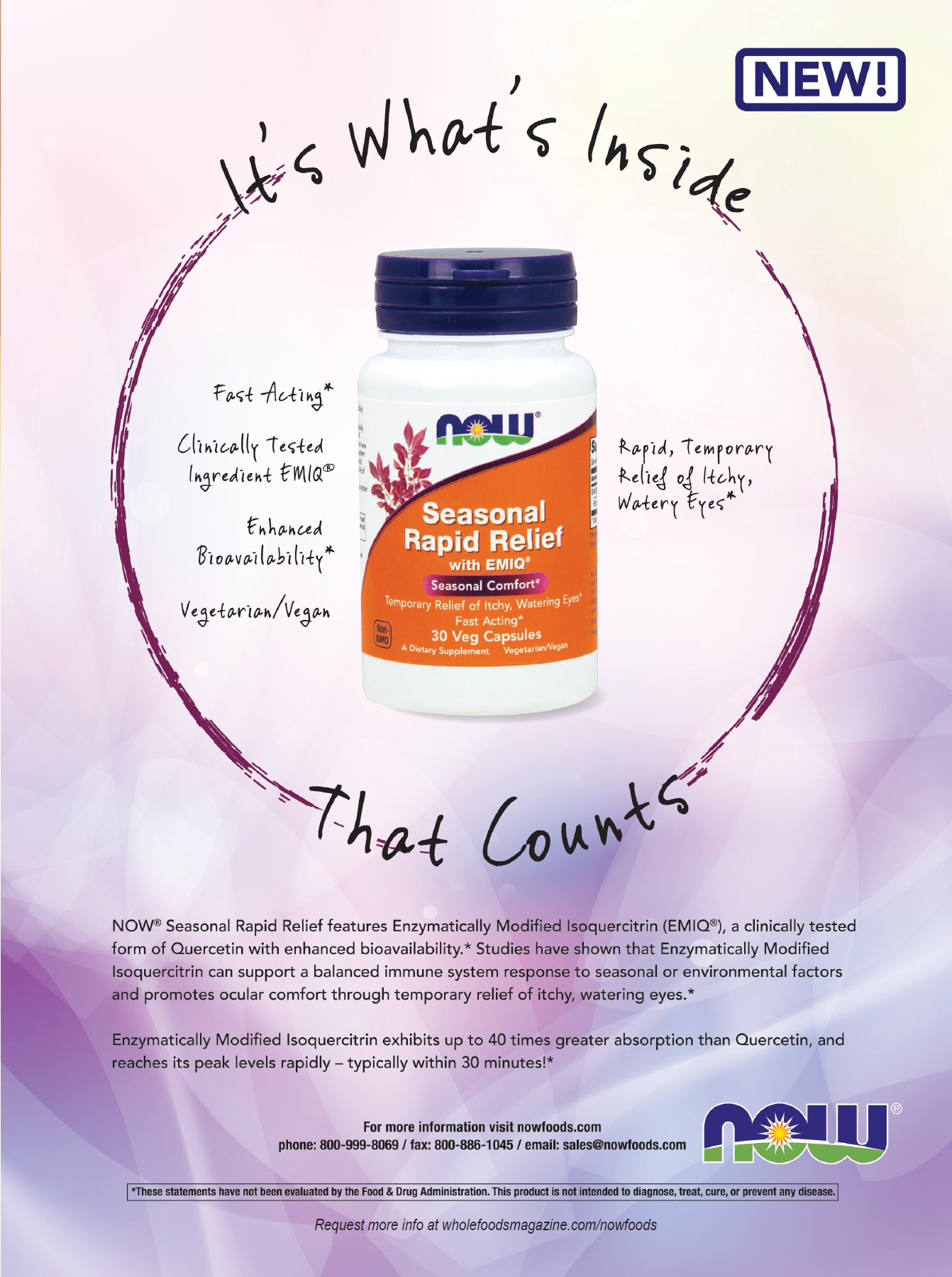 the room to many parents still on the fence. But, similar to the tincture issue, experts recommend looking to the actual content of the sugar in gummies before letting this fact drive them away. Clow turns to the numbers, saying that one of her company’s multivitamin gummies has less than 5 g of sugar, which “is less than a pack of gummy fruit chews (~10 g), flavored oatmeal (~15 g), one serving of peaches in light syrup (18 g), cereal bars (~14-20 g), snack size box of raisins (~20 g) and don’t forget gummy worm candy—one serving has ~25 grams of sugar.” Her ultimate point is many other components of an average child’s diet have far more sugar than a gummy dietary supplement.
the room to many parents still on the fence. But, similar to the tincture issue, experts recommend looking to the actual content of the sugar in gummies before letting this fact drive them away. Clow turns to the numbers, saying that one of her company’s multivitamin gummies has less than 5 g of sugar, which “is less than a pack of gummy fruit chews (~10 g), flavored oatmeal (~15 g), one serving of peaches in light syrup (18 g), cereal bars (~14-20 g), snack size box of raisins (~20 g) and don’t forget gummy worm candy—one serving has ~25 grams of sugar.” Her ultimate point is many other components of an average child’s diet have far more sugar than a gummy dietary supplement.
Hazels Mitmesser acknowledges that “the sugar question is always a difficult one… But on the other hand, artificial sweeteners can be a concern too. There is not a lot of research on the effect of artificial sweeteners on the growing child.” When it comes to determining whether or not gummies should be stocked on your shelves, perhaps the question should be less about sugar and more about what other components can be put in.
Elizabeth Lombardi, director of marketing at Hero Nutritionals, Santa Ana, CA, believes that part of the answer to the question is transparency, saying that “by reading the labels and staying with a trusted brand that has a reputation for quality, parents can feel confident that gummy vitamins are a healthy choice as a nutritional supplement.” In addition, she says that the gummy format allows for versatility as well, from gelatin to vegetarian fruit pectin options to organic gummies. Her company also offers a sugar-free gummy, sweetened with monkfruit. She also mentions lo-han fruit and chicory root as natural sweetener alternatives. When these aren’t options, similar to Clow, she emphasizes picking products with minimal amounts of sugar, while using natural flavors whenever possible to compensate.
Filling The Gaps
Particularly in the case of children, we need to realize that supplements serve as one part of crafting an overall healthy lifestyle. One of the most important things to keep in mind is adhering to a health-promoting diet. Meletis uses the example of ceramic tile to explain the relationship between diets and supplements, saying “instead of thinking of max dosing of vitamin and mineral levels, think of supplementation like the ‘grout’ between ceramic tiles. The tiles represent health promoting meals (diet) and supplements are merely intended to be fillers of gaps in the diet.”
When it comes to children, Gillespie says that one of the best ways to get this across is “leading by example.” Introducing new foods and implementing supplement regimens can be difficult, but she notes  that children tend to mimic parents and older siblings, so taking vitamins at the same time may help.
that children tend to mimic parents and older siblings, so taking vitamins at the same time may help.
Clouatre takes this a step further, believing that “The single most important factor likely is the family eating its main meals together at home on a regular schedule.” He says that children and teenagers eating meals at home regularly can help ensure they take their supplements regularly at the beginning and end of the day.
Of course, equally as important is the content of said meals. Joiner-Bey believes that parents should focus on “the widest range of organic whole food sources for optimal nutrient density and minimal exposure to environmental toxins.” He names smoothies and juices using fresh fruit for flavor as a great way to get these nutritious foods in while still being palatable for children. Hazels Mitmesser recommends “decreasing or eliminating sugary beverages and replacing them with water” as another healthy swap. Cantrell adds that even infants have healthy alternatives available. Her company offers freeze-dried fruit and vegetable snacks—snacks being one of the main ways children of all ages introduce harmful elements into their diets.
Some companies may also fortify their foods with certain nutrients to provide nutrition in a familiar package for children, but they’re not all necessarily created equal. Visram says that her company supports “fortification of foods to help provide children with key nutrients, however, it is essential that the foods that are being fortified are healthful to begin with.” A sugary cereal or dessert, even if fortified, should be avoided since the base food itself isn’t healthy.
|
Preparing for Prenatal Children’s nutrition doesn’t necessarily start at birth. Prenatal health is a burgeoning category that brings its own set of unique Stacy Gillespie, director of marketing at MegaFood, Derry, NH, adds iodine to the list of nutrients expecting mothers should be keeping an eye on. Iodine plays a role in brain development in babies, and severe iodine deficiencies can lead to potential stunted physical and mental growth (1). She also recommends vitamin D, which she says “is critical for the development of bones and the immune system.” Marci Clow, RDN, lead R.D. at Rainbow Light Nutritional Systems, Santa Cruz, CA, names DHA as a supplement that can be beneficial to mother and child at the same time. In addition to being “essential for optimum development of the brain, eyes and central nervous system,” adequate DHA intake may also help reduce the risks of pre-term labor and of postpartum depression in the mother, she says. It is also believed that intake of DHA during pregnancy can support the child’s ability to learn, judge and concentrate later on. One study showed that children whose mothers supplemented with cod liver oil during pregnancy showed higher mental processing scores at four years of age than those who did not (2). Equally important to providing babies with proper nutrients in the womb is keeping potentially harmful factors at a minimum. According to Murray Clarke, N.D., D.Hom. L.Ac., owner, president and formulator of ChildLife Essentials, Culver City, CA, “what science is starting to reveal, and be concerned about, is the microbiome system of the body, of which the foundation is generally laid during pregnancy, birth (normal birth through the birth canal) and directly after birth.” Essential microbes and beneficial bacteria are “seeded” in babies in the birth canal, but he says events like c-sections, antibiotic use, and even heavy amounts of processed foods and certain sugars can disrupt this process, potentially leading to issues for the overall health of infants. References 1. K. Doheny, “Iodine Deficiency Common in Pregnancy, Docs Warn.” http://www.webmd.com/baby/news/20140526/iodine-deficiency-common-in-pregnancy-pediatricians-warn, accessed 7/22/2015. 2. IB Helland et.al., “Maternal supplementation with very-long-chain n-3 fatty acids during pregnancy and lactation augments children’s IQ at 4 years of age.” Pediatrics, 111 (1), 39–44, (2003). |
Sugarek McDonald points out that such replacements should be framed a certain way. Creating healthier diets should never be about “establishing ‘good’ or ‘bad’ foods with children,” she says, “because it can create a negative, emotional relationship between the child and their food intake; therefore, it is more important to establish a healthy relationship and to focus on eating the right amount and balance of foods.”
Sometimes, supplements can play a helpful role indirectly when it comes to healthier diets. Portion control can be a huge issue in Western countries, especially because many of these large portions served at fast-food restaurants and other similar places are not necessarily the healthiest thing to begin with. A recent study showed that a chicory root fiber prebiotic (OraftiSynergy1, from BENEO, Inc., Morris Plains, NJ) was able to improve appetite regulation and decrease food intake in overweight and obese children ages seven to 12. In a press release from BENEO on the study, it was mentioned that the “reduced intake showed a definite impact on the children’s body weight,” and that this backed previous studies saying that chicory root fibers could have value in weight management for children as well as adults (15).
For parents, such a task can be very daunting, but in addition to stocking the food and supplemental options that children need, retailers can play that crucial educational role for the entire family, both on what they may be missing in their diet and the lifestyle changes that can complement it. One fun way to get children interested and informed is through organizing a store tour for them and their families. By making stops at sections like fruits and vegetables, multivitamins, healthy snacks and your juice bar, kids can get a first-hand look (and taste) at some of the great alternatives to salty and sugary snacks. Equally important can be taking the time to explain nutrition panels and ingredient lists, showing children how they can help their body. WF
References
1. Lee YA et.al., “Adequate vitamin D status and adiposity contribute to bone health in peripubertal nonobese children.” J Bone Miner Metab, 31(3), 337-45, 2013.
2. Hess J, Slavin J. “Snacking for a cause: nutritional insufficiencies and excesses of U.S. children, a critical review of food consumption patterns and macronutrient and micronutrient intake of U.S. children.” Nutrients. 6(11), 4750-9, 2014
3. Surgeongeneral.gov, “Bone Health and Osteoporosis: A report from the Surgeon General.” http://www.ncbi.nlm.nih.gov/books/NBK45513/, accessed 7/20/2015.
4. van Summeren MJH, et.al., “The effect of menaquinone-7 (vitamin K2) supplementation on osteocalcin carboxylation in healthy prepubertal children.” Br J Nutr., 102(8),1171-8, 2009.
5. Powell CV et.al., “MAGNEsium Trial In Children (MAGNETIC): a randomised, placebo-controlled trial and economic evaluation of nebulised magnesium sulphate in acute severe asthma in children.” Health Technol Assess., 17(45) pgs 1-216, 2013.
6. Carpenter TO et.al., “A randomized controlled study of effects of dietary magnesium oxide supplementation on bone mineral content in healthy girls.” J Clin Endocrinol Metab., 91(12), 4866-72, 2006
7. Briefel R et.al., “Feeding Infants and Toddlers Study: do vitamin and mineral supplements contribute to nutrient adequacy or excess among US infants and toddlers?” J Am Diet Assoc. 106(1 Suppl 1), 52-65., 2006
8. Siega-Riz AM et.al., New findings from the Feeding Infants and Toddlers Study 2008. Nestle Nutr Workshop Ser Pediatr Program., 68, 83-100, 2011.
9. Attention-Deficit/Hyperactivity Disorder: Data and Statistics. http://www.cdc.gov/ncbddd/adhd/data.html, accessed 7/20/15.
10. Bélanger SA et.al., “Omega-3 fatty acid treatment of children with attention-deficit hyperactivity disorder: A randomized, double-blind, placebo-controlled study.” Paediatr Child Health; 14(2), 89–98, 2009.
11. Raine A et.al., “Reduction in behavior problems with omega-3 supplementation in children aged 8-16 years: a randomized, double-blind, placebo-controlled, stratified, parallel-group trial.” J Child Psychol Psychiatry; 56(5), 509-20, 2015.
12. Arnold LE et.al., “Zinc for attention-deficit/hyperactivity disorder: placebo-controlled double-blind pilot trial alone and combined with amphetamine.” J Child Adolesc Psychopharmacol; 21(1), 1-19, 2011.
13. Huss M et.al., “Supplementation of polyunsaturated fatty acids, magnesium and zinc in children seeking medical advice for attention-deficit/hyperactivity problems - an observational cohort study.” Lipids Health Dis; 9(105), 2010.
14. Luzzi R et.al., “Pycnogenol supplementation improves cognitive function, attention and mental performance in students.” Panminerva Med. 53(3 Suppl 1), 75-82, 2011.
15. Hume M, Nicolucci A, Reimer R, “Prebiotic fiber consumption decreases energy intake in overweight and obese children.” The FASEB Journal. 29(1), Supplement, Abstract 597.3 and presentation handout, 2015
Published in WholeFoods Magazine, September 2015



 options and solutions to ensure the best start possible for both mother and child. Gene Bruno, MS, MHS, vice president of formulation and scientific oversight of Twinlab Corp, New York, NY, says that keeping all the vital nutrients at proper levels is important, but names folate (folic acid), iron and calcium as three important nutrients to consider. Folate is essential for embryonic and fetal health, particularly for its role in closure of the neural tube (the embryo’s precursor to the central nervous system early in pregnancy). He adds that “In fact, the FDA allows the following health claim for foods containing 100 percent (800 mcg) or less of the DV for folate: ‘Adequate folate [or folic acid] in healthful diets may reduce a woman’s risk of having a child with a brain or spinal cord birth defect.’” Iron is essential during pregnancy to support growth and development of the fetus and placenta and to meet the increased demand for red blood cells to transport oxygen, while calcium is a vital component of bones and teeth.
options and solutions to ensure the best start possible for both mother and child. Gene Bruno, MS, MHS, vice president of formulation and scientific oversight of Twinlab Corp, New York, NY, says that keeping all the vital nutrients at proper levels is important, but names folate (folic acid), iron and calcium as three important nutrients to consider. Folate is essential for embryonic and fetal health, particularly for its role in closure of the neural tube (the embryo’s precursor to the central nervous system early in pregnancy). He adds that “In fact, the FDA allows the following health claim for foods containing 100 percent (800 mcg) or less of the DV for folate: ‘Adequate folate [or folic acid] in healthful diets may reduce a woman’s risk of having a child with a brain or spinal cord birth defect.’” Iron is essential during pregnancy to support growth and development of the fetus and placenta and to meet the increased demand for red blood cells to transport oxygen, while calcium is a vital component of bones and teeth.






